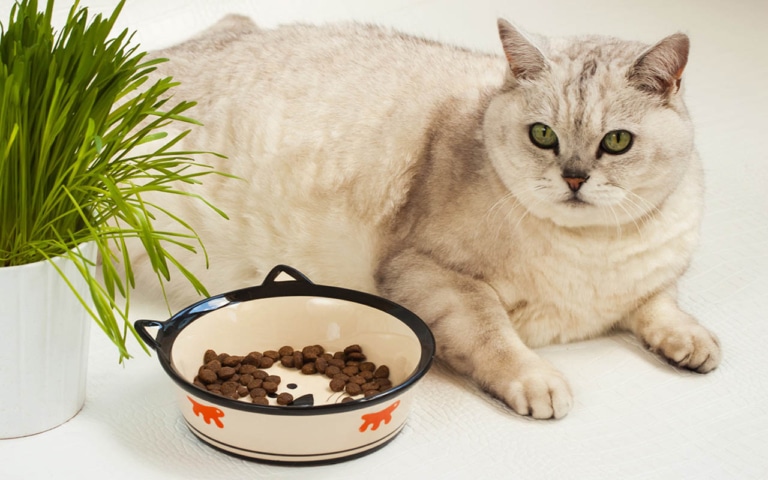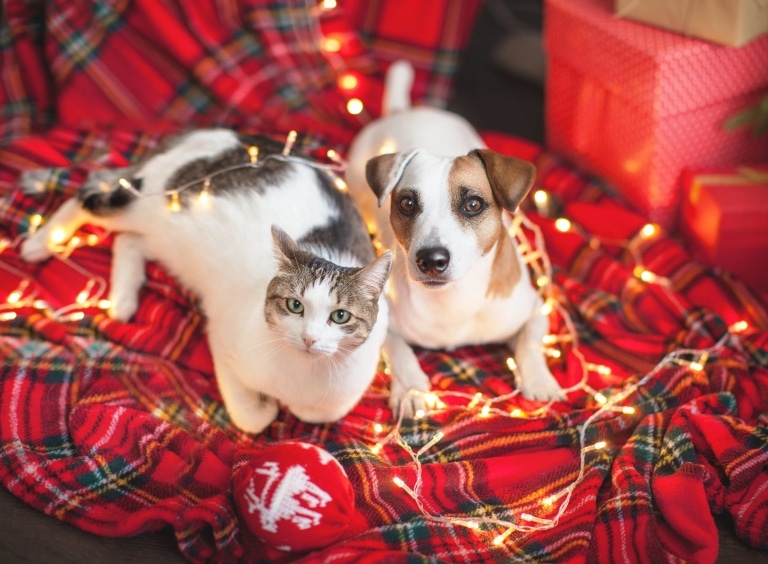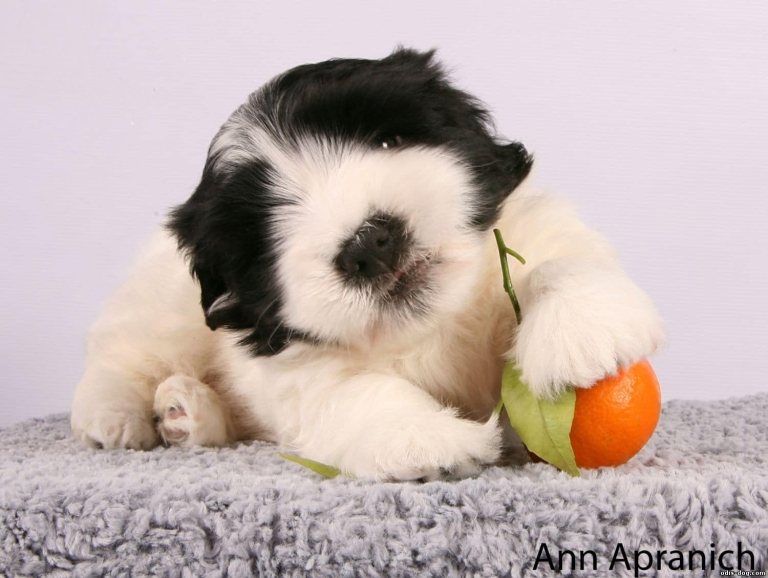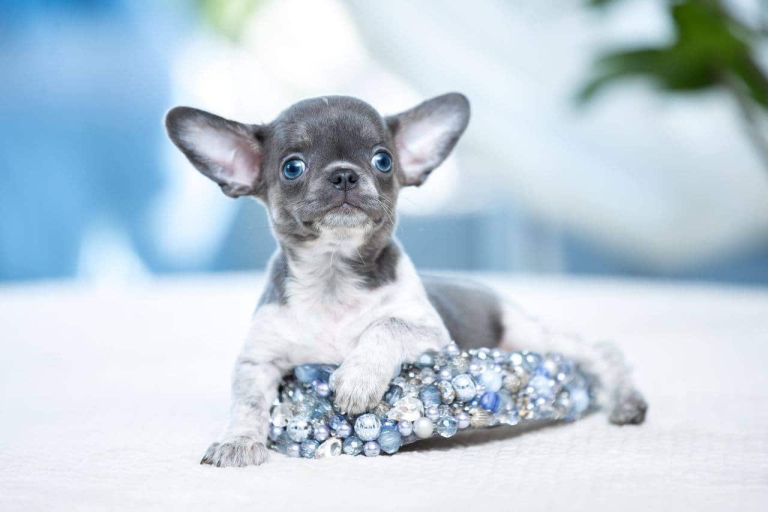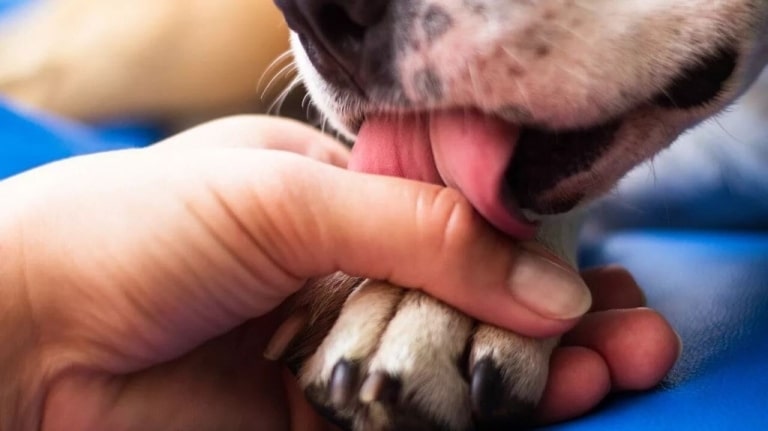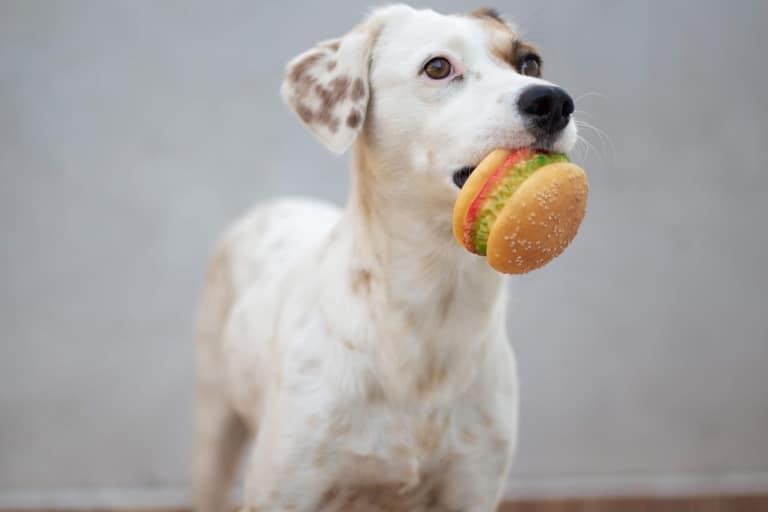Feline obesity is one of the most common health problems in cats, and it is spreading rapidly around the world. This is facilitated by millions of views on the Internet of various videos of “chubby” pets, although it is a serious disease that worsens well-being and shortens life expectancy. In essence, obesity is the accumulation of excess fat in the body, which exceeds 20% of the ideal. If your cat weighs significantly more than is recommended for its breed, age and size, this may indicate the presence of a disease.
What are the first signs that a cat is prone to obesity?
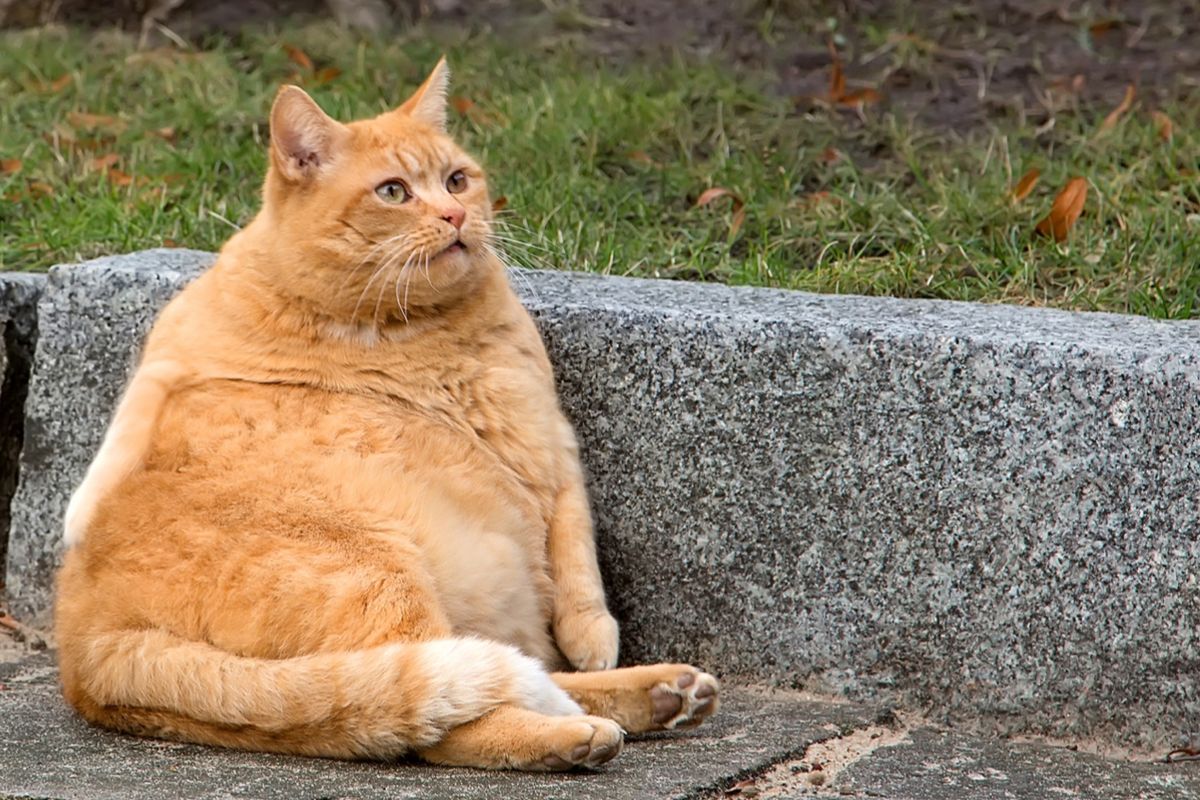
The first signs that a cat is prone to obesity may not always be obvious, but there are some important signals to look out for:
- If you notice that your cat’s weight is gradually increasing, this may be the first sign. Cats that gain weight quickly, especially after spaying or neutering, may be prone to obesity.
- A healthy cat should have a visible waist when viewed from above. If this area becomes less visible or disappears, this is a signal of possible fat accumulation.
- If it is difficult to feel the ribs through a layer of fat, this may be a sign of excess weight.
- If a cat lives indoors, it usually has fewer opportunities for physical activity. Street cats, on the contrary, move a lot, hunt and explore the environment, which contributes to maintaining a normal weight. If the cat becomes less active, plays less and spends more time in a state of rest or sleep, gaining weight will be quite logical due to the lack of exercise.
- Constant requests to eat both the usual food and any treats may indicate that the cat is consuming more calories than it needs.
- The stomach becomes more pronounced and “sags”, which can be a sign of the initial stage of obesity. Please note that a completely healthy cat should have a belly with a small layer of fat. If the stomach is completely flat or sticks to the spine, then we are talking about a lack of weight.
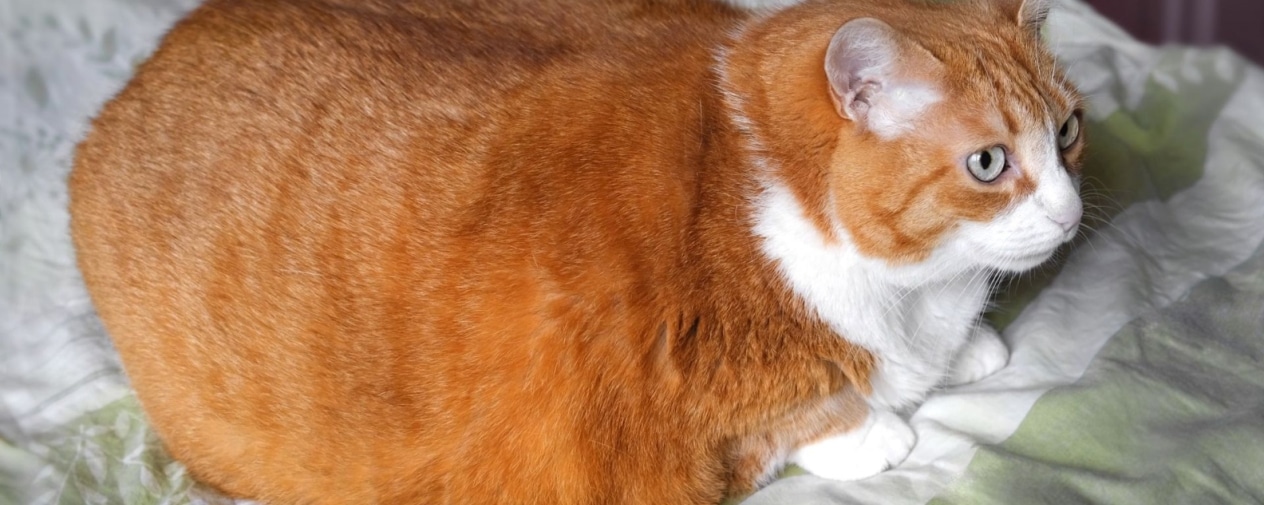
Proper nutrition
If you notice any of the above symptoms, you should first of all review your cat’s diet, and also consult a veterinarian for the development of an individual nutrition and physical activity plan. Proper nutrition plays a major role in weight control and obesity treatment. It will help the cat lose weight gradually and safely, keeping it healthy and active.
First of all, you need to figure out what your cat eats, what the composition of the feed is, how much it consumes, and how often you treat it with treats.
It is necessary to choose food with a high protein content and low fat content to feel full and maintain muscle mass during weight loss. In pet stores, there is a sufficient selection of special diet foods that contain fewer calories, but retain all the necessary nutrients. Also, pay attention to wet food, they help to maintain hydration.
When the selection of the diet is finished, the most difficult stage for the owners begins – a clear dosage of food and a taboo on goodies and leftovers from the table. The vet or food manufacturer will usually give a recommended amount of food based on the cat’s weight, so never give more than recommended and don’t leave food in the bowl all day. This encourages the cat to eat more than it needs.
Do not drastically cut calories, create a small calorie deficit so that weight loss is gradual and not harmful to health. To do this, weigh your pet weekly and make sure that he loses only 1-2% of his body weight per week.
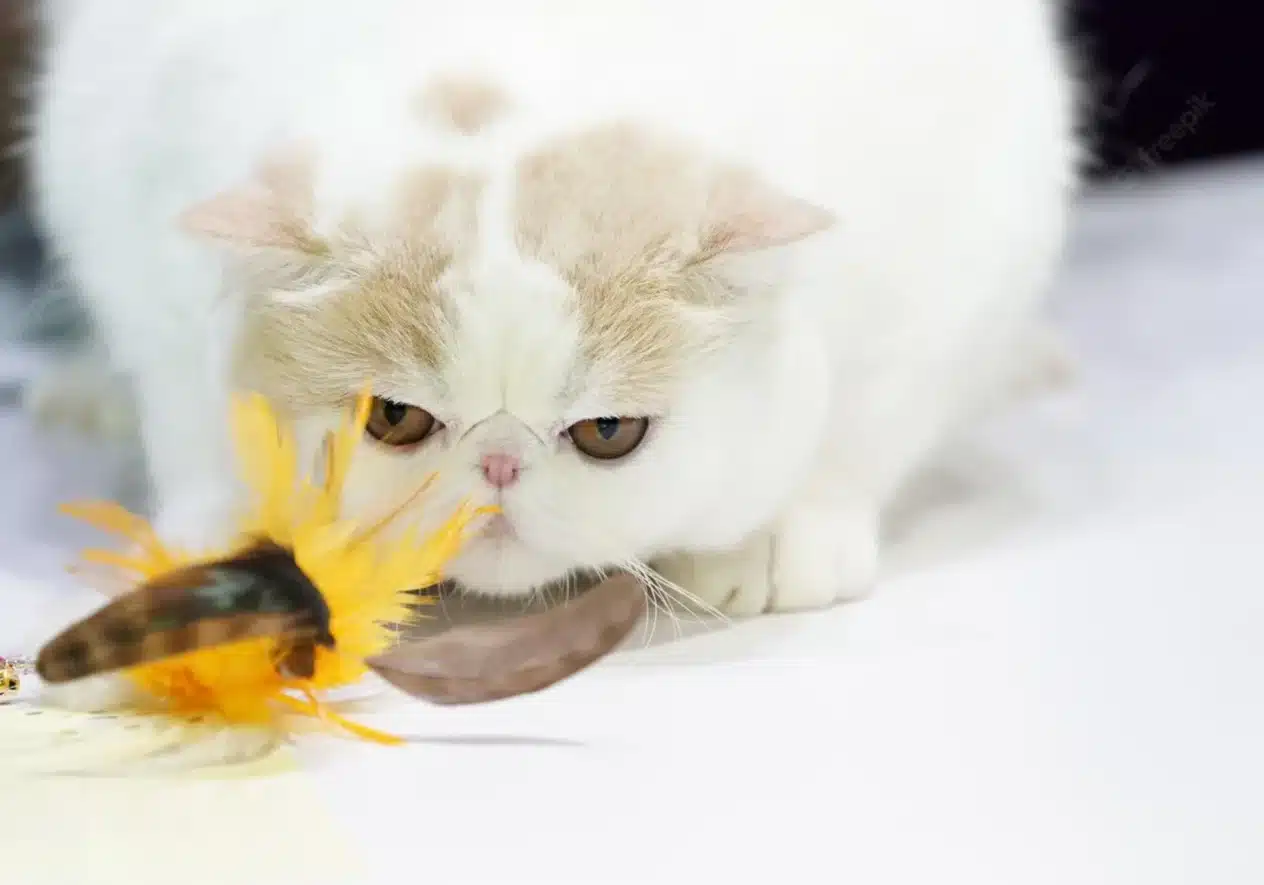
What weight should a cat have?
A cat’s weight depends on its breed, age, sex, and general health. However, there are average indicators that you can focus on:
- The normal weight of a cat is from 3.5 to 5.5 kg.
- Larger cat breeds (such as Maine Coons) can weigh 6 to 8 kg, sometimes even more, especially males.
- Miniature breeds (for example, Siamese or Abyssinian cats) weigh from 2.5 to 4.5 kg.
If you have any doubts about your pet’s weight, it is best to consult a veterinarian who can assess its physical condition.
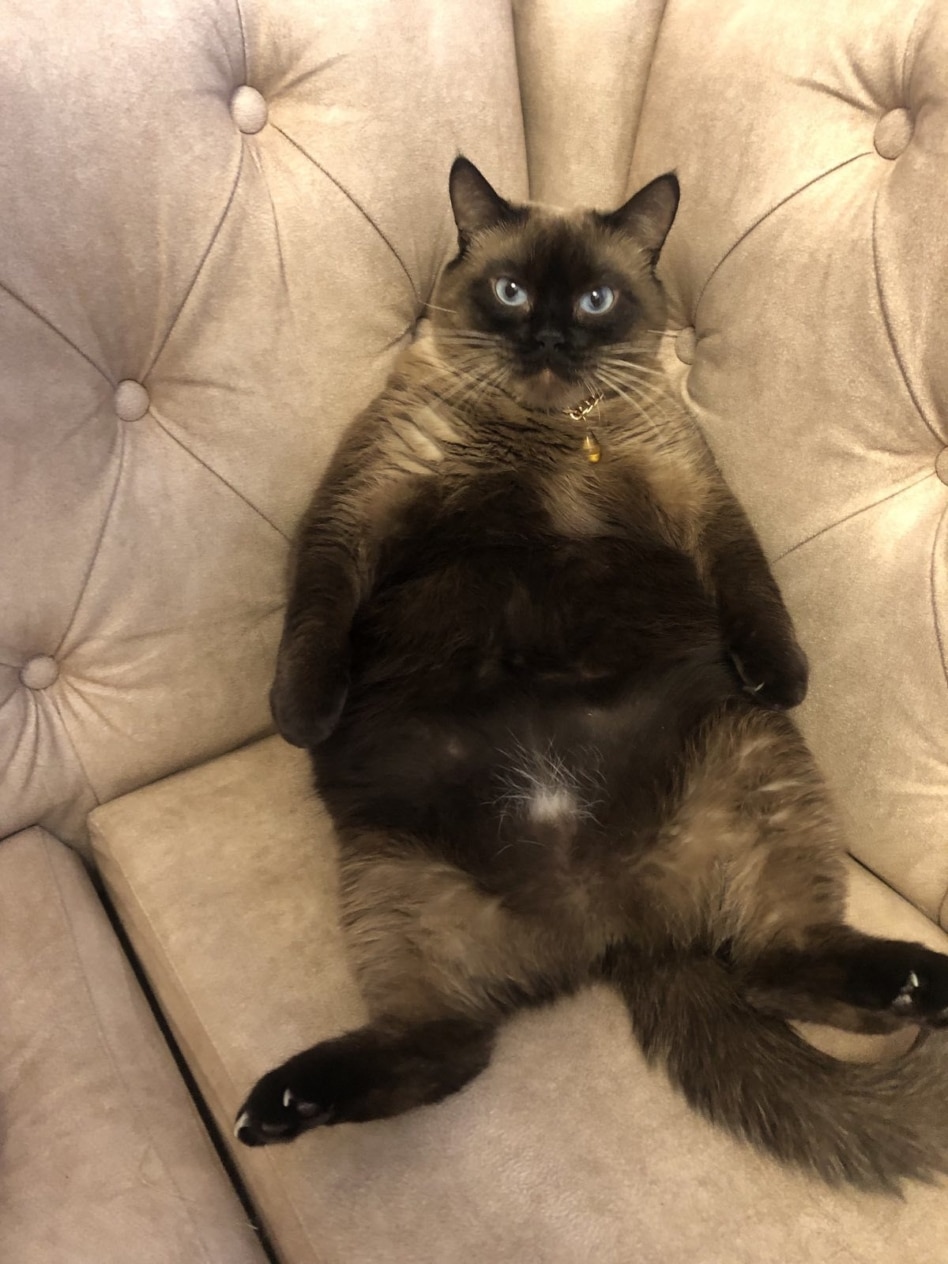
Diseases that occur as a result of obesity
Obesity in cats can lead to the development of serious diseases that negatively affect the quality and length of their lives, so it is important to control their weight and know what diseases obesity can lead to.
The most common disease is diabetes. Being overweight reduces the sensitivity of cells to insulin, which can lead to diabetes, the need for constant monitoring of blood sugar and insulin injections. Obesity also puts extra strain on the heart, increases the risk of high blood pressure and can cause heart disease. Fatty hepatosis (fatty liver) is another life-threatening complication that can result from obesity. Joints and bones suffer, arthritis develops, existing problems with the musculoskeletal system worsen. This can cause your cat to suffer from chronic pain. Digestive problems appear (constipation, gastrointestinal disorders). Immunity decreases, the cat becomes more prone to various infections. And of course, excess weight interferes with free breathing, as fat deposits compress the lungs and airways.
The list is quite long, isn’t it? It is difficult to imagine that so many diseases can arise due to obesity, but there is a way out.

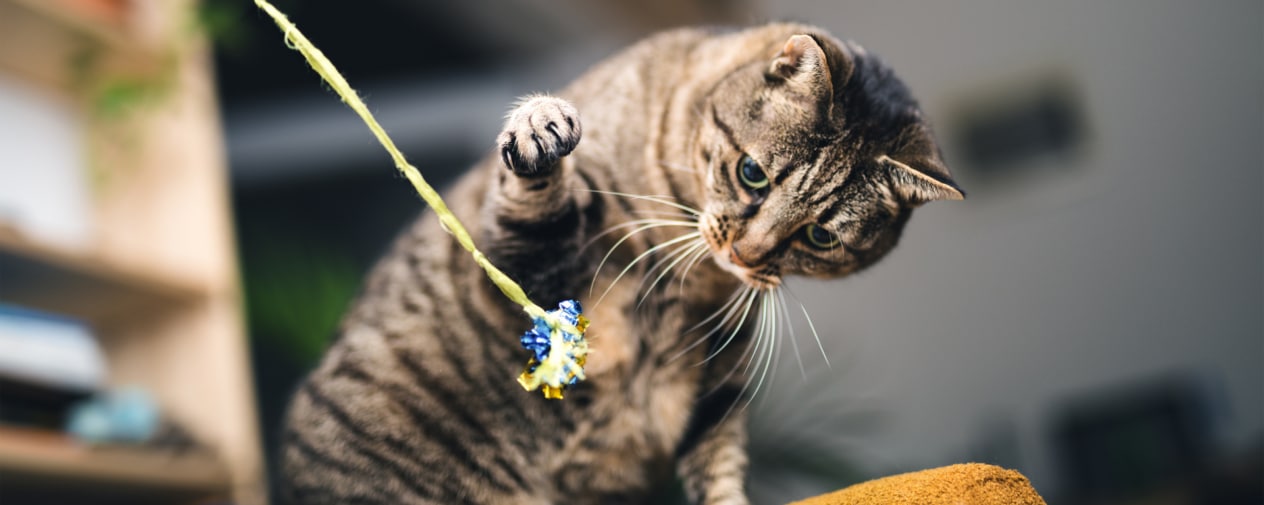
Diet and activity: returning to a healthy life
Returning a cat to a healthy life requires a comprehensive approach, which includes not only diet correction, but also increased physical activity, so catch a few tips from the “V.O.G DOG SALON” network of salons:
- We talked about proper nutrition above, but we would like to add about the importance of fractional nutrition. Dividing the daily feed rate into several meals (2-4 times a day) will help maintain the energy level during the day and reduce the feeling of hunger in your pet.
- Try feeding the cat from interactive feeders or special toys that simulate hunting. This not only slows down eating, but also stimulates physical activity.
- Ensure constant access to fresh water, as adequate fluid intake is important for metabolism.
- To increase physical activity, use interactive toys (feathers on sticks, balls, catnip toys, etc.) to stimulate the cat to move and think. This will help him expend energy and keep him physically fit. In order for this activity to be systematic, determine a specific time for active games. 10-15 minutes of playing twice a day can go a long way in burning calories.
- If your cat is not afraid of the outdoors, you can teach it to walk on a leash. This is a fun way to keep active, especially those who live in an apartment.
- In some cases, medications may be prescribed to reduce appetite or speed up metabolism, so be sure to visit a veterinarian and monitor this process responsibly.
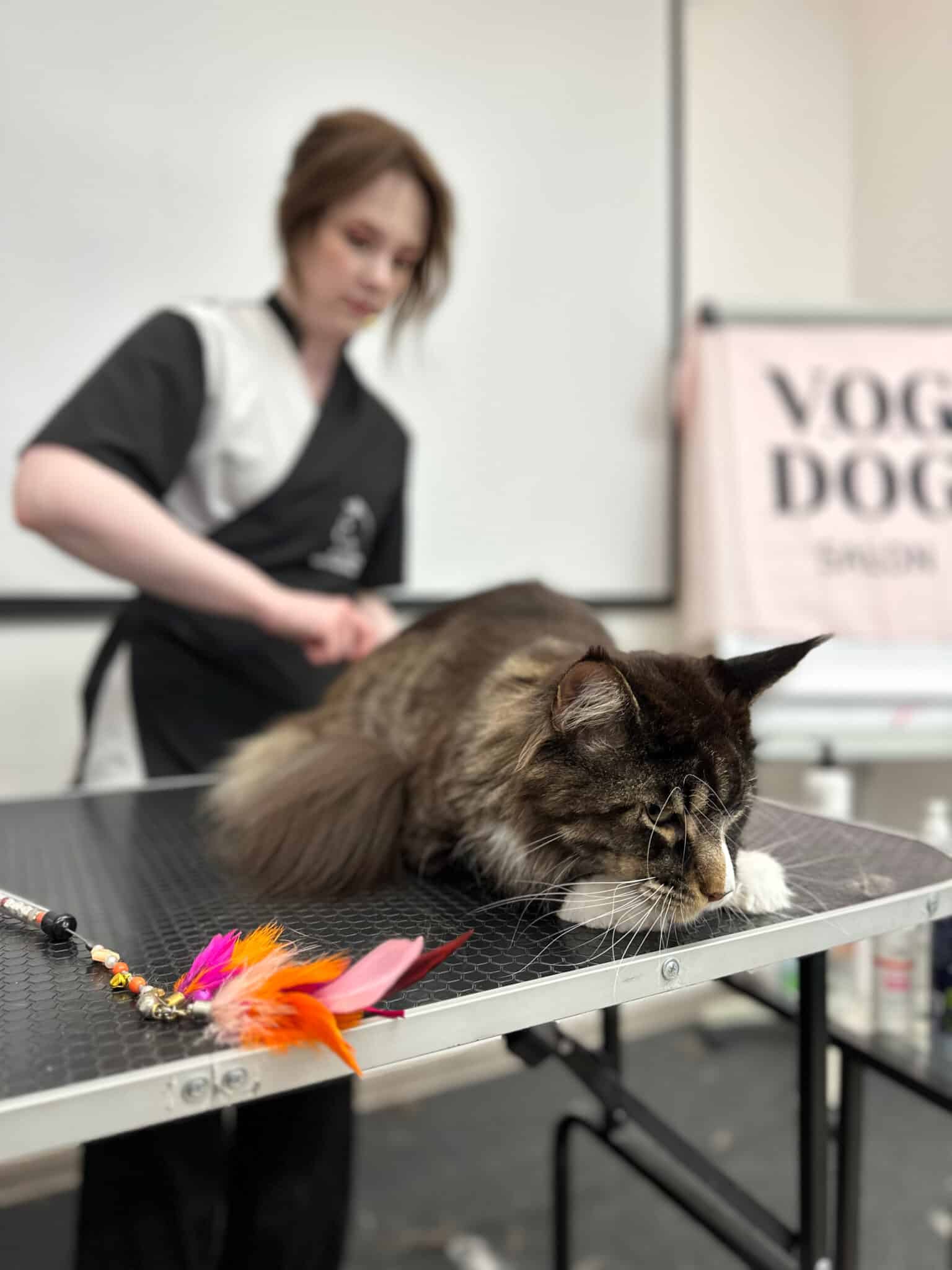
Grooming as part of a healthy life for your cat
In addition to proper diet and exercise, regular cat grooming can play an important role in maintaining health. Grooming not only helps keep the coat clean and tidy, but also helps reduce the stress that often accompanies obesity. Professional grooming salons V.O.G DOG SALON provide high-quality hair care and additional procedures that help stimulate the animal’s activity. During grooming, the cat receives a massage that improves blood circulation, which can also help in the fight against excess weight.
Sign up for regular grooming so that your cat is always not only beautiful, but also healthy. V.O.G DOG SALON specialists provide an individual approach to each animal, which makes the procedures safe and comfortable even for pets who are prone to excess weight.

